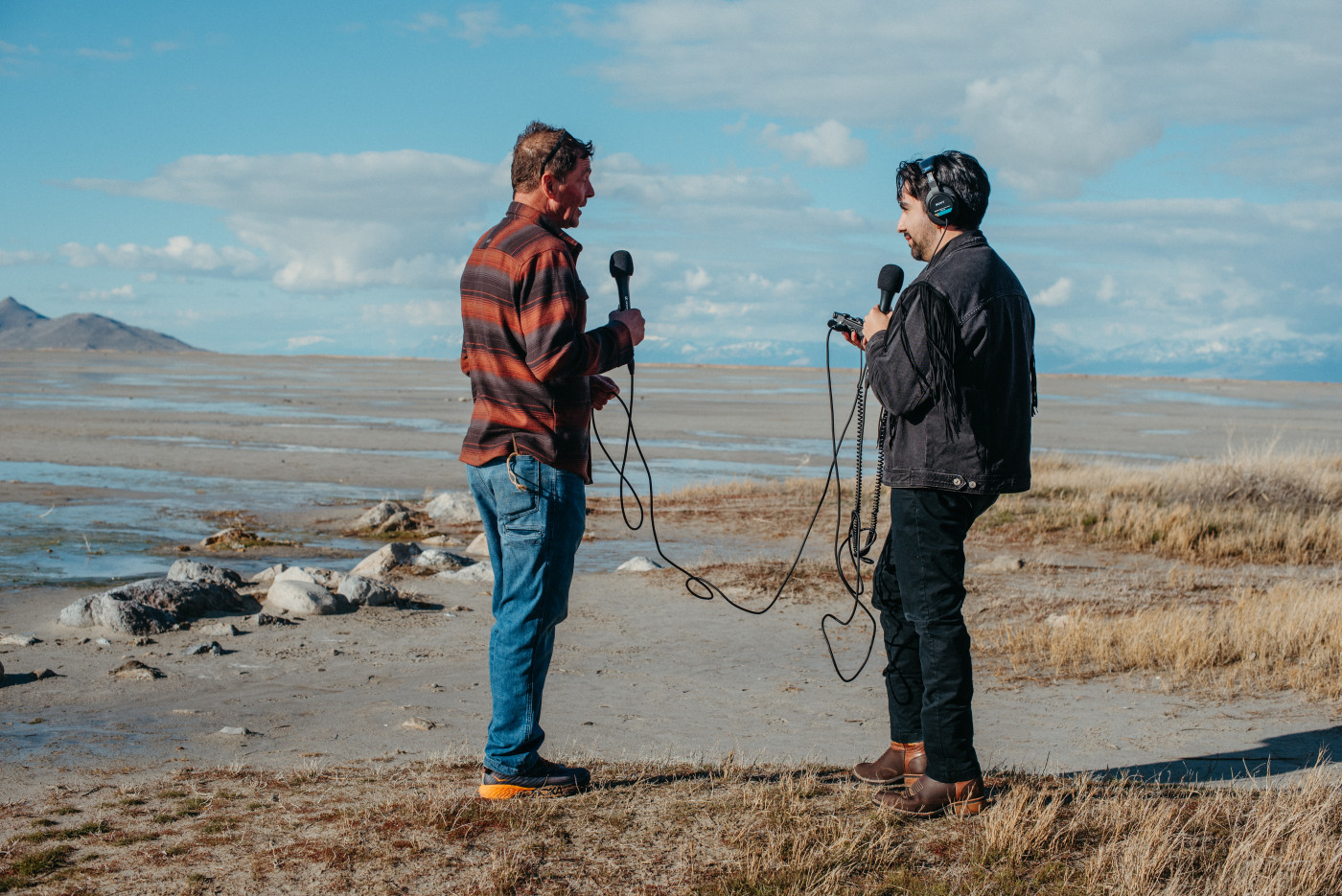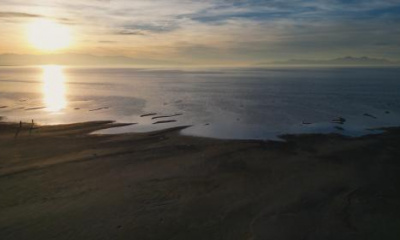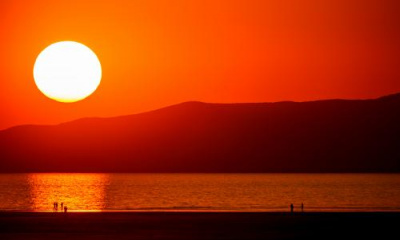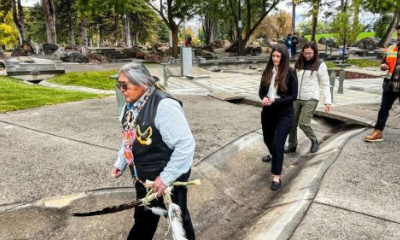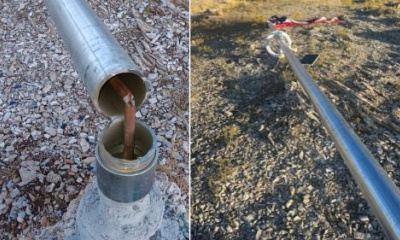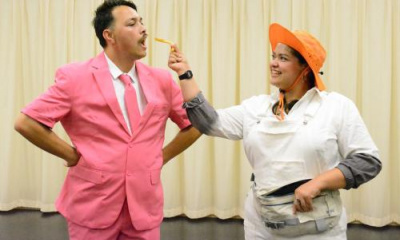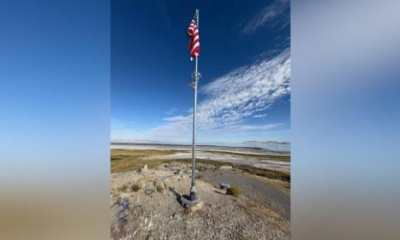Olivia Juarez doesn’t want to leave Salt Lake City. And they don’t want you to leave either.
“All of my family's here,” said Juarez, a lifelong Utahn and one of the voices behind a new podcast focused on Great Salt Lake. “Everything I love is here …. and so, it would be incredibly heartbreaking and disrupting to my life to leave.”
The “Stay Salty: Lakefacing Stories” podcast launched on March 25 and explores what it means to keep living in the Great Salt Lake Basin as concerns mount around environmental and public health issues around the shrinking body of water.
Juarez, public land program director for GreenLatinos, said they and co-host Meisei Gonzalez wanted to amplify voices not always heard in storytelling about the lake, including conversations with youth activists, Indigenous leaders, people with disabilities, farmers, parents, brine shrimpers and people who are incarcerated.
“Conversations about the climate crisis and economic transition happen at a scientific level or a policy decision-making level, but not on a personal level,” Juarez said. “We started this podcast to focus on people who live here [and] to understand how their daily lives are being impacted by the Great Salt Lake.”
A project by Of Salt and Sand, a Utah-based storytelling collective, the podcast team includes Hosts Juarez and Gonzalez, Visual Artist Frances Ngo, Photographer and Visual Director Jeri Gravlin, Event Curator Ashley Finley, and Producers Maria Archibald, Amelia Diehl and Brooke Larsen.
Gonzalez said he and the team hope to raise questions about what these changes mean for the broadest possible cross-section of the valley’s residents.
“As with many environmental issues, many community members who are primarily people of color, Indigenous, queer, disabled and working class are facing the realities of climate change firsthand,” said Gonzalez, who grew up in Salt Lake’s west side communities and works as communications director for Healthy Environment Alliance of Utah, or HEAL Utah. “We believe there is a need for frontline community members' voices to be centered in this conversation.”
Just weeks after the launch of “Stay Salty,” Juarez and Gonzalez talked with the Great Salt Lake Collaborative about their hopes for the podcast, the future of the lake, and what they want to learn from the people who live in its namesake valley.
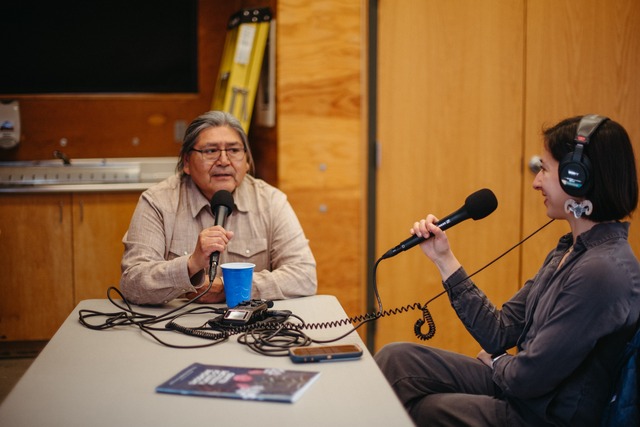
Rios Pacheco, cultural and history advisor for the Northwestern Band of the Shoshone Nation, and Olivia Juarez meet at the Antelope Island State Park Visitor Center to talk about Shoshone connections to Great Salt Lake on March 11. (Photo Jeri Gravlin)
GSLC: Why did you choose "What It Means to Stay" as the theme of your first episode?
MG: This helped set the stage for the rest of the podcast, letting individuals know the complexity of what it means to stay in a place facing an environmental crisis.
OJ: Our entire project team came together to come up with a list of podcast topics. We decided which ones to include in season one … by choosing stories that felt relevant, highlighted perspectives and stories that have not been focused on by others and that were timely and relevant.
GSLC: The lake is also, in many ways, one of the podcast’s main characters. Do you stick around the studio to record?
OJ: [We’re] in the field at various locations such as Antelope Island, the Jordan River Nature Center and the Southern Utah Wilderness Alliance (SUWA) podcast studio.
MG: And [on] the Great Salt Lake’s shores.
GSLC: This podcast grapples with what it means to stay in the Great Salt Lake Basin as we face an ecological and public health crisis. What have you learned so far?
MG: We have learned that financials and community are big driving factors in staying. Many individuals expressed that they do not have the financial resources to simply leave the state. Others expressed that their community, family and work are primarily here, making it very difficult for them to leave this state.
GSLC: How do you bring humor into a podcast about a pretty heavy topic?
OJ: By speaking in a light or humorous tone when it is appropriate. The title, “Stay Salty,” is a form of humor. For me, in the face of difficult questions, you can be optimistic, despair or fight back, and “staying salty” is a form of the latter. It's a reflection that it's OK to be salty, or in other words be angry or dissatisfied, with the crisis at Great Salt Lake, and use that energy to act.
MG: We believe that humor is needed and is something that we can all relate to one another. We wanted the interview questions to help guide the interviewee but relied heavily on stories of joy to bring humor and hope.
GSLC: How do you approach communities to be involved in the show?
MG: Our goal is to amplify the stories of individuals and community members who have historically been left out of the Great Salt Lake conversations … The team all have backgrounds in community organizing, which was key to ensuring that we were creating this podcast by the community for the community.
OJ: We [first] invite guests to join the show and have a pre-interview with them to give details about the project. We gift guests an honorarium and a photograph that will be used in the art exhibit at the [downtown Salt Lake City] library … The exhibit features portrait photography of podcast guests, with quotes from their interviews. We hope to bring this art exhibit to other Great Salt Lake Basin communities.
GSLC: Any standout episodes you’d like to give a shout out?
OJ: My favorite episode is episode two. It's the episode about love. Love for and at the Great Salt Lake. There are dating stories and engagement stories. It will be very fun to listen to it.
GSLC: What’s to come in future episodes?
MG: We will interview many different community members and highlight important stories. One episode that was very interesting to produce was about the Utah state prison, which is built on the shores of the Great Salt Lake.
OJ: My goal for this podcast and project is for everybody who lives in our community to know that their stories are valuable, to know that their connection to the Great Salt Lake and the climate, when they talk about it, and it’s going to make a difference.
GSLC: What’s your takeaway so far? Is it worth staying?
MG: This depends on everyone's own needs, but to many, Utah is home. This is where they grew up, created a community, and raised their families. It is also a state with many natural resources and outdoor spaces that many Utah residents cherish … I hope to see systemic action taken to help address not only the drying of the Great Salt Lake but many other environmental issues that we are facing, such as heat waves and air pollution.

Some of the ‘Stay Salty: Lakefacing Stories’ team, from left: Maria Archibald, Jeri Gravlin, Brooke Larsen, Meisei Gonzalez, Amelia Diehl and Olivia Juarez. (Photo courtesy Stay Salty)
***
See the Exhibit
The “What it Means to Stay: Lakefacing Stories” exhibit at the downtown Salt Lake City public library (210 E. 400 South) opened April 13 and runs through June 1. The multimedia project explores “what it means to stay with Great Salt Lake through ecological collapse, climate crisis, and a public health disaster.” Free and open to the public.

